Venezuela << `vehn` ih ZWAY luh >> is a country in South America. It lies on the north coast of the continent, along the Caribbean Sea. Mountain ranges extend across much of northern Venezuela, which is the most densely populated region of the country. Caracas, the capital and largest city, lies in this region. Vast plains called the Llanos spread across central Venezuela. High plateaus and low mountains cover the south. Venezuela has large reserves of petroleum (oil and natural gas). Its economy is based largely on petroleum production.
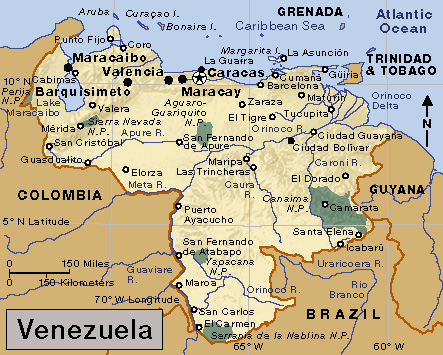
Most of Venezuela’s people live in cities and towns. Nearly all Venezuelans speak Spanish. Most of the people are descendants of Indigenous (native) people, Europeans, and Africans who intermarried.
The European explorer Christopher Columbus landed in what is now Venezuela in 1498 on his third voyage to the “New World” (the Western Hemisphere). It was his first landing on the mainland of the Americas. Later, European explorers in northwestern Venezuela found Indigenous villages where the houses were built on poles over the Gulf of Venezuela and Lake Maracaibo. Some of the explorers were reminded of Venice, Italy, where buildings stood along the water. They named the area Venezuela, which is Spanish for Little Venice. The name Venezuela was later applied to a large area of northern South America. Spain ruled Venezuela for about 300 years. In 1811, Venezuela declared its independence.
Government
Venezuela is a federal republic. All citizens 18 years old and older may vote. Venezuela has had 27 constitutions since 1811. Its present Constitution was adopted in 1999 and amended in 2009.
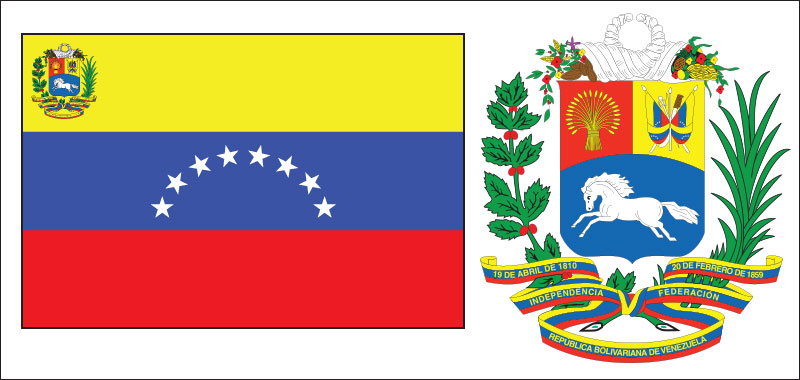
National government.
According to the Constitution, the president serves as Venezuela’s head of state and as head of the executive branch of government. The people elect the president to a six-year term. The National Assembly is Venezuela’s legislature. The people elect the members of the National Assembly to five-year terms. Government officials who are elected by the people may serve an unlimited number of terms in office. The Supreme Tribunal of Justice, formerly called the Supreme Court of Justice, is Venezuela’s highest court.
Loading the player...Venezuela national anthem
Local government.
Venezuela is divided into 23 states and the Capital District. The states and the Capital District each have a governor and a legislature, both elected by the people. The country also has many islands in the Caribbean that are federal dependencies.
Armed forces.
Venezuela has an army, navy, air force, and national guard. Men may be drafted for 30 months of military service after reaching 18 years of age. In addition, the country has a volunteer paramilitary organization called the National Bolivarian Militia.
People
Ancestry.
Numerous Indigenous groups lived in what is now Venezuela before Spain colonized the area in the 1500’s. The Spaniards conquered many of the Indigenous groups. They also brought in Africans and enslaved them. Many of the Indigenous people, Spaniards, and Africans intermarried. Today, over half of Venezuela’s population has mixed ancestry. People of unmixed Indigenous, European, or African ancestry make up the rest of the country’s population.
After 1945, and especially in the 1950’s, many Europeans moved to Venezuela to seek jobs. Most of them came from Spain, Italy, and Portugal. Many Colombians immigrated illegally in the 1970’s and early 1980’s. At that time, a jump in oil prices caused a dramatic increase in Venezuela’s wealth. The government used some of that wealth to launch projects that created many jobs.
Languages.
Almost all Venezuelans speak Spanish, the country’s official language. Indigenous people in remote areas speak various Indigenous languages.
Ways of life.
Compared with some other Latin American countries, Venezuela has an open society. Although there is no rigid segregation based on ethnic or class differences, poorer people generally have darker skin, and wealthier people generally have lighter skin.
Economic instability caused by changes in the price of oil has led to big swings in standards of living. For example, oil-price increases in the 1950’s, 1970’s, and first decade of the 2000’s resulted in economic growth and higher living standards. Oil-price decreases in the 1960’s, 1980’s, and 2010’s contributed to a steep rise in poverty and inflation. Such economic change is called a boom-and-bust cycle. Political conflict in the early decades of the 2000’s also contributed to economic instability.
Since the 1940’s, many Venezuelans have moved from rural areas to cities. Today, most of the people live in urban centers. As the nation’s cities have grown, so has its middle class, which includes business people, government employees, doctors, lawyers, teachers, and other professionals. Middle-class Venezuelans own cars and take vacations. Some families live in one-story, Spanish-style houses that center on a courtyard. But in most cities, high-rise apartment buildings have largely replaced such houses.
Many Venezuelans live in crowded squatter settlements on the outskirts of cities. Many of them live in small shacks called ranchos, which sit dangerously on mountainsides without good roads or sanitation. But they often have televisions and refrigerators and access to electric power. Thousands of ranchos cover large areas in and around many cities. 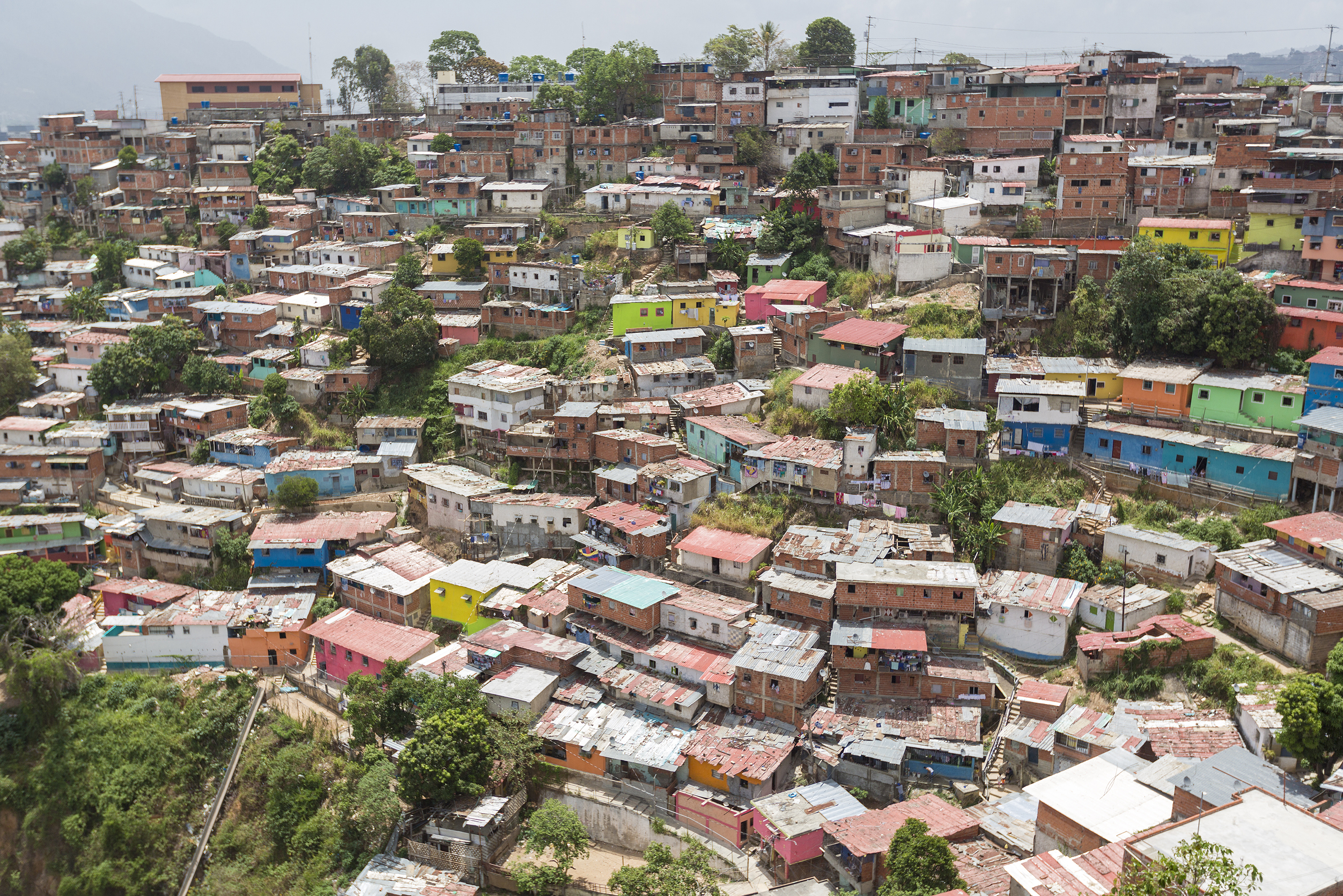
In the 1960’s, Venezuela’s government began massive programs to improve the living conditions of the poor. It furnished building materials, electric power, water, and sewerage facilities for some rancho dwellers. Large public housing units were built in many cities. The government also took steps to improve rural life so that people would remain on farms. In many rural areas, the government built paved roads, extended electric-power service, and set up educational and health facilities. In the early 2000’s, the government began a new program to bring health clinics, adult-education programs, and subsidized food markets to poor neighborhoods, and to build new housing complexes for rancho residents.
Food.
Traditional Venezuelan foods include black beans, plantains (a kind of banana), and rice, which are usually eaten with beef, fish, pork, or poultry. The traditional bread is the arepa, a round cake made of corn meal. Venezuelans also buy prepared foods in supermarkets and commonly eat wheat bread.
The national dish of Venezuela is the pabellón criollo, a combination of black beans, plantains, rice, and shredded and stewed beef. Another traditional meal is the hallaca, served mainly at Christmas. Hallacas consist of yellow corn-meal dough filled with a variety of foods and cooked in wrappers made of a type of banana leaf.
Recreation.
Baseball, basketball, and fútbol (soccer) are the most popular spectator sports in Venezuela. Professional teams play before large crowds in city stadiums. Some smaller cities have bullfights, which do not attract as many people as competitive sports events do. Bullfighting has been banned in most major cities. 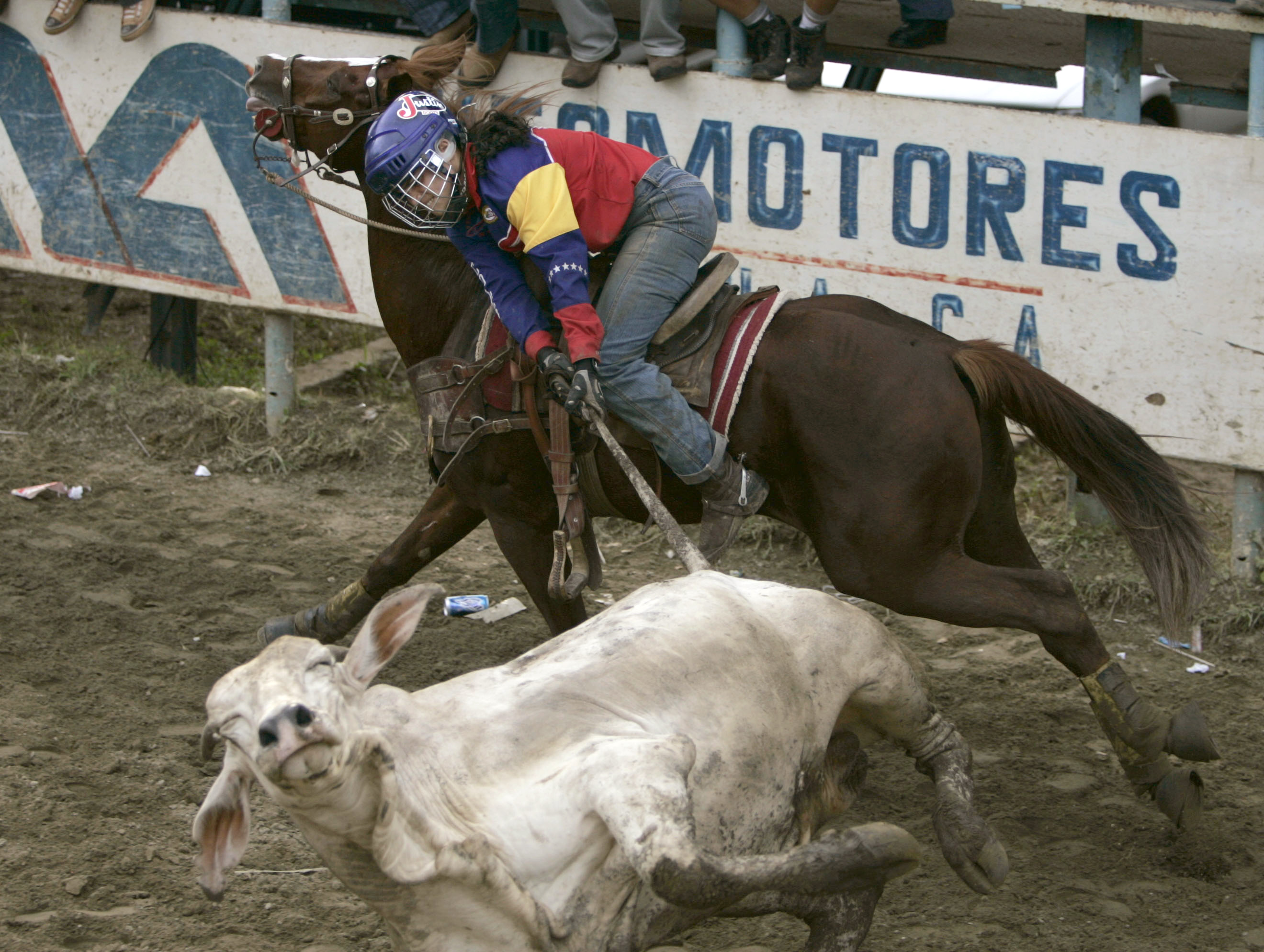
Venezuelans enjoy music and dancing. Popular dances include the exciting, rhythmic salsa and such fast, lively Caribbean dances as the merengue and guaracha. The national folk dance of Venezuela is the joropo. This stamping dance is performed to the music of cuatros (four-stringed guitars), the harp, and maracas (rattles made of gourds). Rock music and reggaetón, a thumping electronic music, are also popular among young people.
Religion.
Roman Catholicism has long been the traditional religion in Venezuela. Most people are baptized Catholics. However, the Constitution guarantees freedom of worship. Some Venezuelans are Protestant or follow other religions.
Education.
Almost all Venezuelans 15 years of age or older can read and write. The law requires children from ages 6 through 15 to attend school. Venezuelans can receive a free public education from kindergarten through graduate school. The country has numerous public and private universities and colleges. The oldest and most important is the Central University of Venezuela, a public university in Caracas.
The arts.
Several Venezuelan writers and artists have won international fame. The novelist Teresa de la Parra and the poet Andrés Eloy Blanco were among the most important writers of the 1900’s. But probably the best-known writer was Rómulo Gallegos, who also served as president of the country in 1948. Gallegos portrayed the distinctive character of different regions of Venezuela in such novels as Doña Bárbara (1929), Canaima (1935), and Pobre Negro (1937). Leading artists have included the abstract painters and sculptors Alejandro Otero and Jesús Soto.
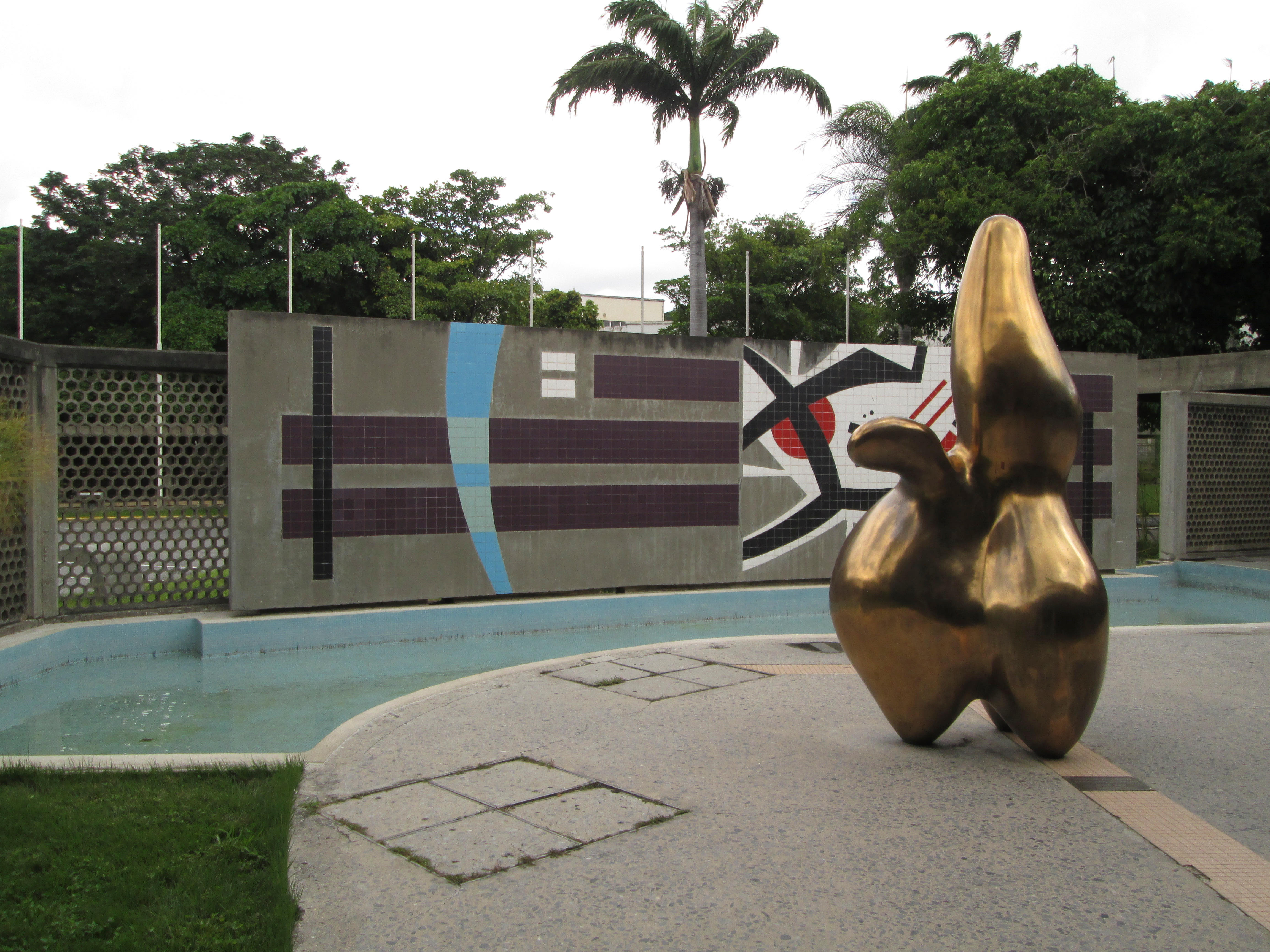
Venezuela also has produced some spectacular modern architecture. Outstanding examples can be found on the campus of the Central University of Venezuela. Boldly designed buildings have been brought together there with imaginative murals and sculptures. In 2000, the United Nations agency called UNESCO added the campus to the World Heritage List, an international register of places with great cultural or natural value.
Land regions
Venezuela has four major land regions. They are (1) the Maracaibo Basin, (2) the Andean Highlands, (3) the Llanos, and (4) the Guiana Highlands.

The Maracaibo Basin
lies in northwestern Venezuela. It consists of Lake Maracaibo and the lowlands around it. Lake Maracaibo is the largest lake in South America. It covers 5,217 square miles (13,512 square kilometers). The continent’s largest known petroleum deposits lie in the Maracaibo Basin.
The Andean Highlands
begin southwest of the Maracaibo Basin and extend across northern Venezuela. Most of Venezuela’s people live in this region. The region has three sections. They are, from west to east: (1) the Mérida Range, (2) the Central Highlands, and (3) the Northeastern Highlands.
The Mérida Range
consists of mountain ranges and high plateaus. Pico Bolívar, the highest point in Venezuela, rises 16,411 feet (5,002 meters) above sea level.
The Central Highlands
consist of two parallel mountain ranges along the Caribbean coast. Fertile valleys lie between these ranges, and beaches and archipelagos (island groups) lie along the coast. The Central Highlands have more people and more industries than any other area in Venezuela.
The Northeastern Highlands
consist of low mountains and hilly land. A famous natural feature of this area is the Cave of the Guácharo, near the town of Caripe. Thousands of large birds called guácharos live in the cave. These birds are found only in northern South America and chiefly in this cave.
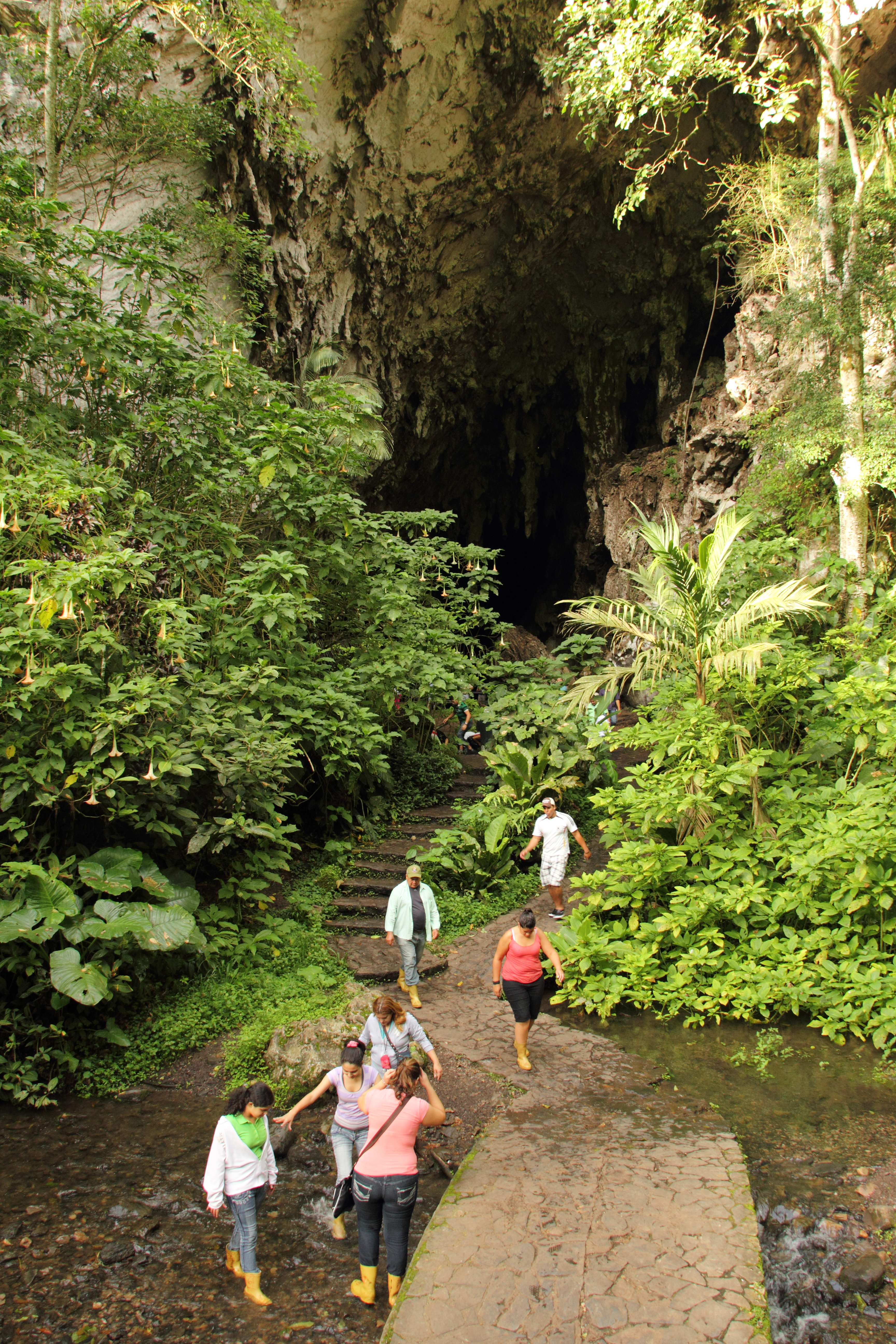
The Llanos
lie between the Andean Highlands and the Guiana Highlands. The Orinoco River, which begins in the Guiana Highlands, flows from west to east along the southern border of the Llanos. The river and its tributaries drain most of Venezuela. The Orinoco extends 1,284 miles (2,066 kilometers). It is the longest river in the country.
Large cattle ranches cover much of the Llanos. The cowhands on these ranches are called llaneros. The Llanos also have farmland. But the region has a long dry season, and it requires irrigation to grow such crops as rice and sesame. Rich oil fields lie in the eastern Llanos.
The Guiana Highlands
rise south of the Llanos. They cover nearly half of Venezuela. Swift-flowing rivers have deeply eroded the region’s high plateaus, which are home to impressive flat-topped mountains called tepuis (also spelled tepuyes). Angel Falls, the world’s highest waterfall, plunges 3,212 feet (979 meters) in the Guiana Highlands. Tropical forests cover much of the southern part of the region.
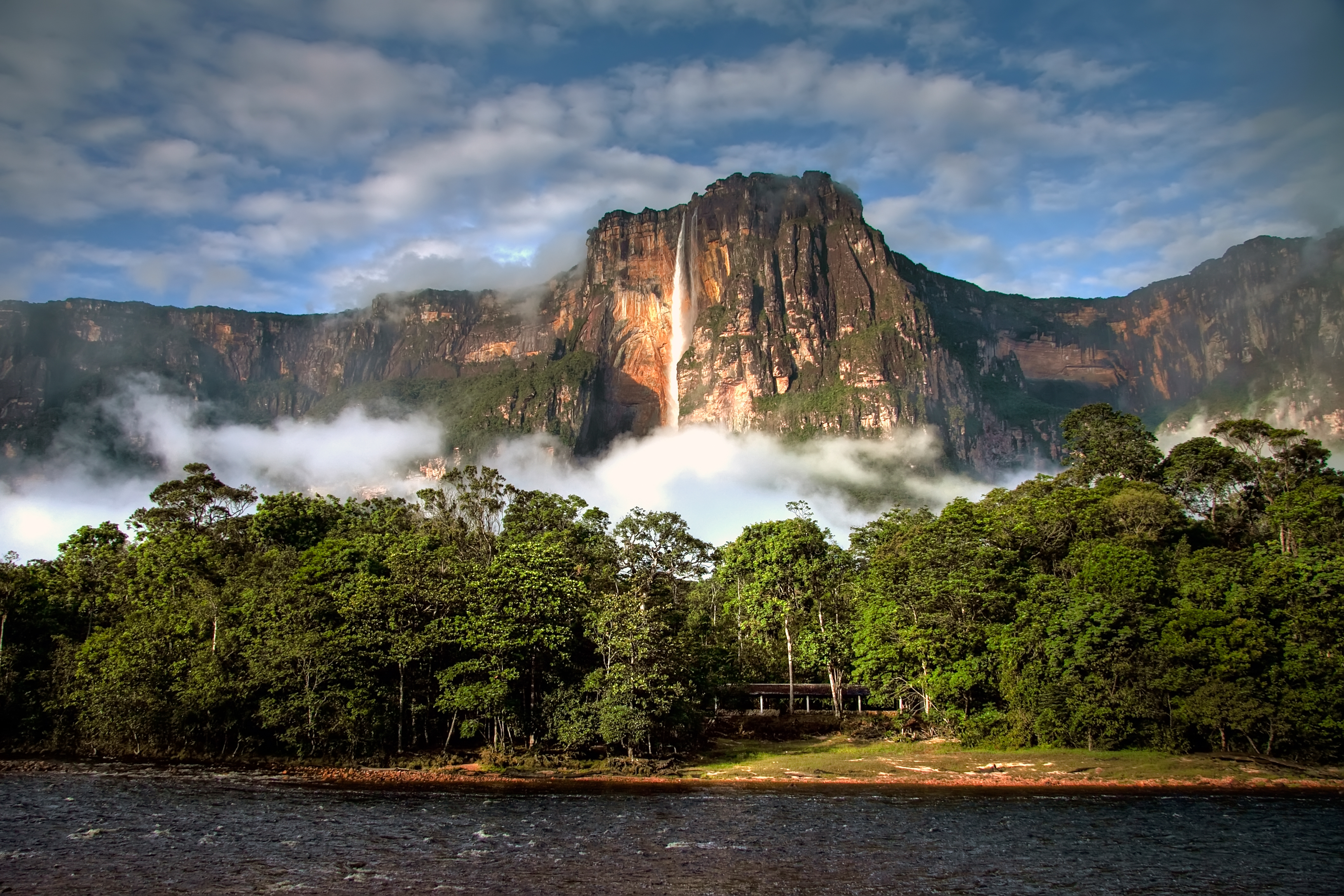

Scattered groups of Indigenous people live in the Guiana Highlands. However, many areas have no inhabitants. The region has valuable deposits of bauxite, iron ore, and gold. These deposits, along with key waterways like the Caroni and Orinoco rivers, have made such cities as Ciudad Bolívar and Ciudad Guayana major industrial centers. Some rivers in the region have been dammed and provide large amounts of electric power, although poor maintenance sometimes has led to blackouts.
Climate
Venezuela lies entirely within the tropics. But the average temperatures vary throughout the country, depending chiefly on altitude. Lowland areas are warm all year. The highest average annual temperature, 83 °F (28 °C), occurs in the central part of the Llanos and in the northern Maracaibo Basin. At higher elevations, the weather is much cooler. In the Andean Highlands at Mérida, the annual temperature averages 67 °F (19 °C).
The amount of rainfall varies greatly in different parts of Venezuela. Annual rainfall averages about 120 inches (305 centimeters) in the Perijá Mountains, which are west of Lake Maracaibo, and in the southern Guiana Highlands. In contrast, much of the Caribbean coast is dry, and some areas receive only 16 inches (41 centimeters) of rainfall yearly. Most of the rest of the country has alternate wet and dry seasons. In the eastern Llanos, annual rainfall averages about 40 inches (100 centimeters).
Economy
Venezuela’s economy is largely based on the country’s petroleum production. The nation’s wealth is not distributed evenly among the people, and poverty and unemployment are major problems in many areas.
In the 1900’s and early 2000’s, Venezuela was one of the world’s leading producers and exporters of petroleum. Venezuela’s petroleum industry began to grow rapidly in the 1920’s. Before that, the economy was based on such agricultural products as cacao and coffee. Income from petroleum enabled Venezuela to carry out huge industrial development and modernization programs. Beginning in the late 1900’s, however, decreases in oil prices, as well as political conflict, contributed to great economic hardship for many Venezuelans.
Natural resources.
Venezuela has one of the world’s largest oil reserves. Rich oil fields lie in the Maracaibo Basin and in the eastern Llanos. Large amounts of natural gas occur in the oil fields. The Guri Dam on the Caroni River in the Guiana Highlands is one of the world’s largest dams.
Service industries
employ well over half of Venezuela’s workers. Service industries include such economic activities as education, health care, and the operation of transportation companies. Hotels, restaurants, and shops once benefited from hundreds of thousands of tourists annually. But tourism fell significantly beginning in the 2010’s, due to economic and political troubles.
Manufacturing
has grown rapidly in Venezuela since 1970. Manufactured products include aluminum, cement, fertilizers, motor vehicles, processed foods, steel, and textiles. Ciudad Guayana produces some aluminum and steel. A variety of products are made in Barquisimeto, Caracas, and Valencia. Petroleum processing, once the leading manufacturing activity, has decreased significantly.
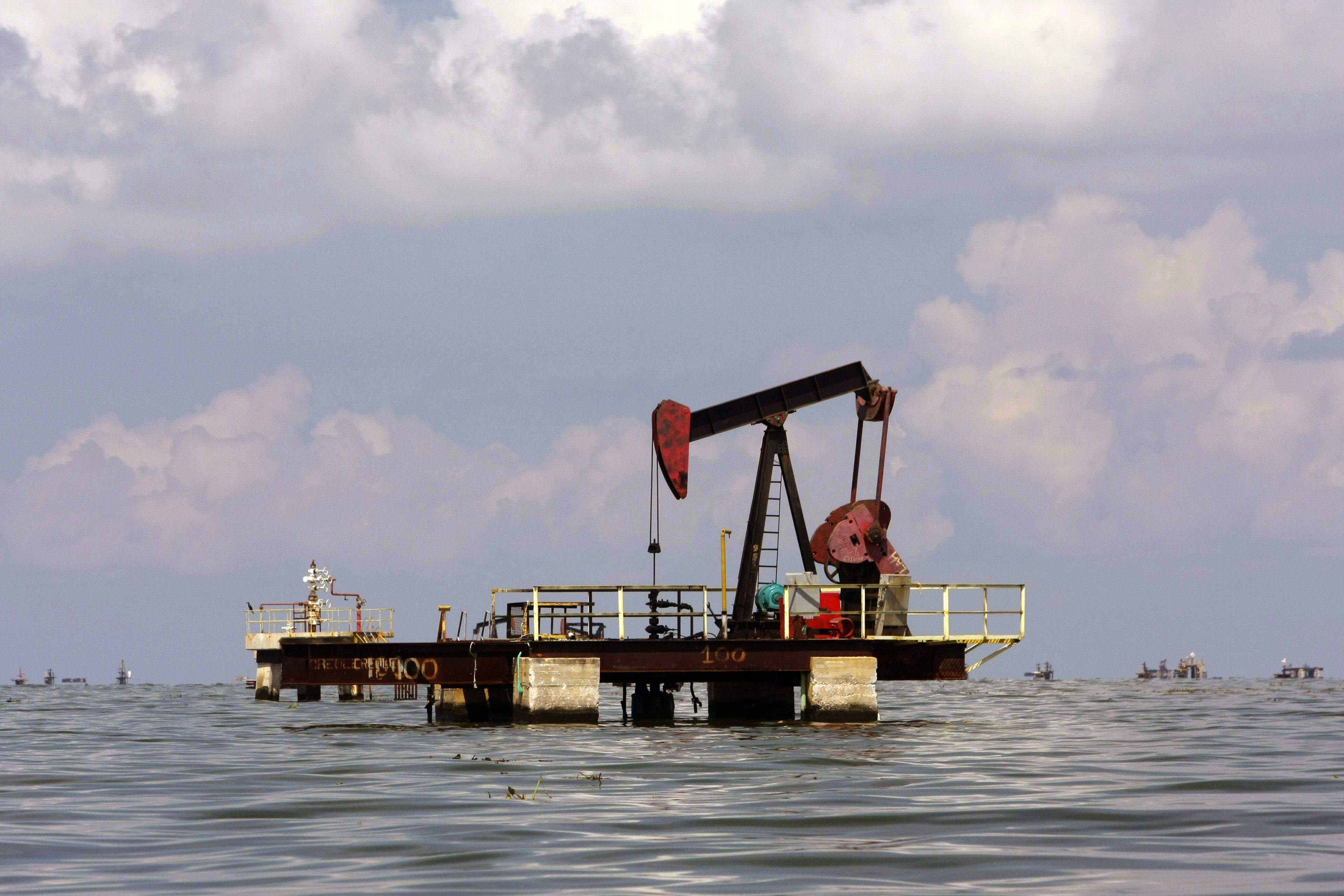
Agriculture
is also important to Venezuela’s economy. The main crops include bananas, coffee, corn, pineapples, rice, and sugar cane. Farmers also raise beef and dairy cattle, hogs, and poultry. Large farms and ranches raise most of Venezuela’s commercial farm products.
Most Venezuelan farms are operated by their owners. A small percentage of farms are rented. Some Venezuelans farm land that they do not own or rent. Most of these people live in isolated areas where they cultivate small plots called conucos. They produce only enough food to support themselves. During the 1960’s, the government began programs that provided farmland for many landless rural families. A law passed in 2001 called for the redistribution of private farmland that was not being used productively to families without land.
Mining.
Important mineral products in Venezuela include bauxite, coal, diamonds, gold, iron ore, nickel, petroleum (both natural gas and oil), and phosphate rock. The country has some of the world’s largest reserves of natural gas and oil.
International trade.
Venezuela’s exports include aluminum, chemicals, gold, and iron and steel. Venezuela’s main imports include agricultural products, chemicals, industrial machinery, and transportation equipment. Brazil, China, and Colombia are among Venezuela’s chief trading partners.
Transportation and communication.
Modern highways link Caracas with other large cities in Venezuela, including Maracaibo, Valencia, and Ciudad Guayana. Most of the roads in rural areas are unpaved. The country has few railroads. Simón Bolívar International Airport, near Caracas, is Venezuela’s busiest airport. The leading seaports include La Guaira, Maracaibo, and Puerto Cabello.
Leading newspapers include El Nacional, El Universal, and Últimas Noticias, all published in Caracas; and Panorama, published in Maracaibo. Both the government and commercial broadcasters operate the country’s television and radio stations. Cell phone and internet usage have both increased rapidly since the early 2000’s.
History
Early inhabitants.
Many Indigenous groups lived in what is now Venezuela before European settlers arrived. The two main groups were the Carib and the Arawak. The Carib lived in the eastern part of Venezuela, and the Arawak lived in the west. Both groups lived by farming, fishing, gathering wild plants, and hunting. Diseases brought to America by the Europeans killed large numbers of Indigenous people. Many others starved or were killed in warfare.
European exploration and settlement.
Christopher Columbus was the first European explorer to reach Venezuela. In 1498, he landed on the Paria Peninsula. In 1498 and 1499, Spaniards explored most of South America’s Caribbean coast. Spanish settlers soon followed the explorers.
During the early 1500’s, the Spaniards came to Venezuela to collect pearls from oyster beds around the islands of Margarita and Cubagua. They called the area from the Araya Peninsula to Cape Codera the Pearl Coast. The Spaniards also worked the extensive salt ponds on the Araya Peninsula. From 1528 to 1546, King Charles I of Spain leased Venezuela to a group of German bankers to pay off his debts to them. The Germans did little to advance the economy of the colony.
By the 1700’s, Venezuela was one of Spain’s poorest South American colonies. To increase trade and develop the economy, Spain gave the Royal Guipuzcoana Company of Caracas, a private trading company, the right to control all trade in Venezuela. The company began to operate in 1730. It expanded the colony’s economy, which was based on cacao, indigo, and hides. But the colonists resented the company’s rigid control over trade. The firm eventually lost much of its power and in 1784 went out of business.
The struggle for independence.
During the early 1800’s, Spain’s South American colonies began to fight for independence. The chief leaders in the independence movement included the Venezuelans Simón Bolívar, Francisco de Miranda, and Antonio José de Sucre. They and their followers fought for many years to free all of northern South America from Spanish rule.
Venezuela was the first Spanish colony in South America to demand its independence. The colony declared its freedom on July 5, 1811, though Spanish forces still occupied much of the country. Venezuela did not become truly independent until 1821. That year, Bolívar won a great victory against the Spaniards at Carabobo, near Valencia. Meanwhile, in 1819, Bolívar had set up and become president of Gran Colombia, a republic that eventually included what are now Venezuela, Colombia, Ecuador, and Panama. Venezuela broke away from Gran Colombia in 1829 and drafted a separate constitution in 1830. General José Antonio Páez, a leader in Venezuela’s independence movement, became the first president of the new Venezuelan republic in 1831. 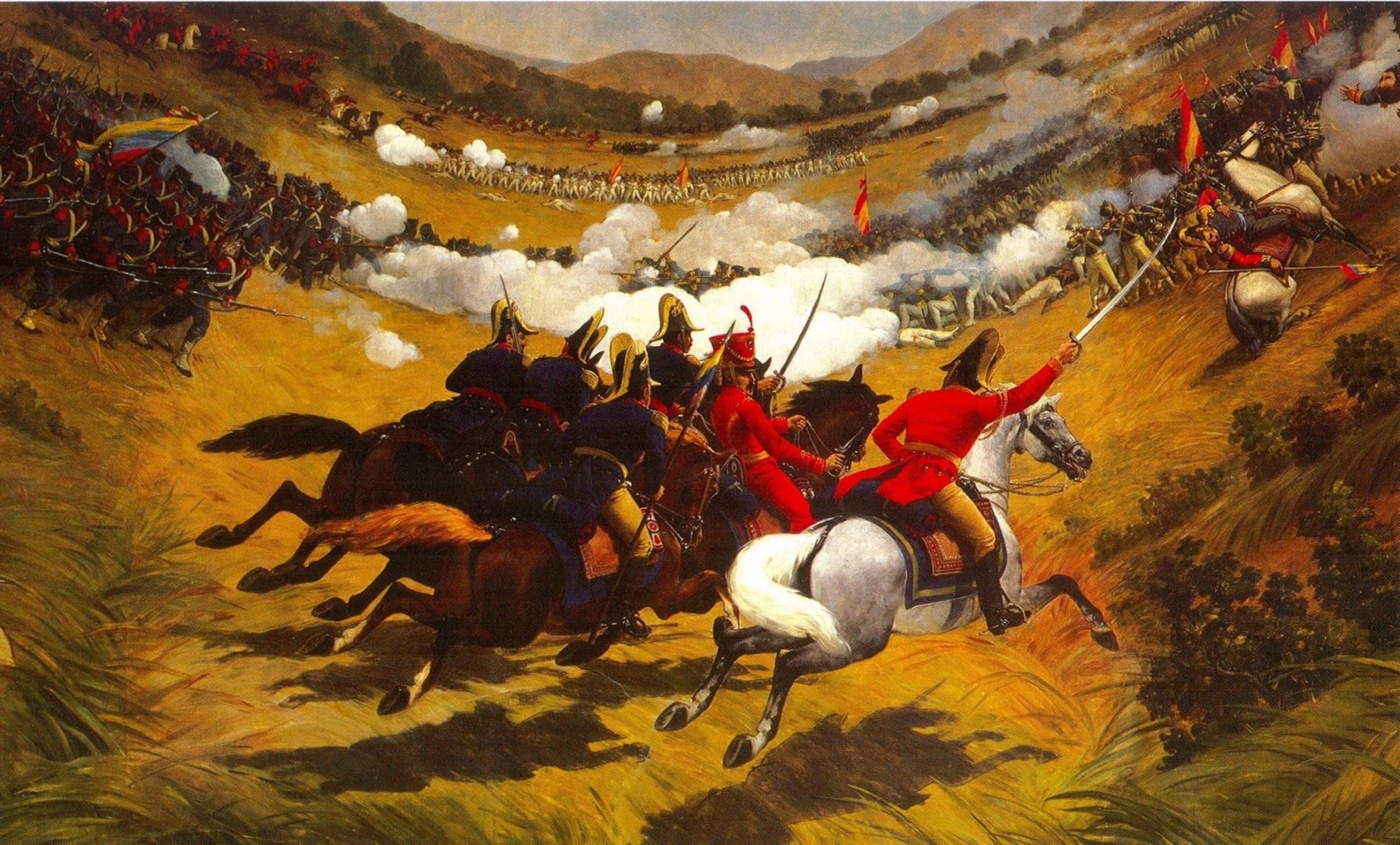
Rule by dictatorships.
After achieving independence, Venezuela had many periods of civil unrest. A series of dictators known as caudillos ruled the country until the mid-1900’s. Two of these caudillos, Generals Antonio Guzmán Blanco and Juan Vicente Gómez, greatly influenced Venezuela’s development.
Guzmán Blanco ruled Venezuela from 1870 to 1888. Before 1870, civil wars and political instability had torn the country apart. Guzmán Blanco established order. He built roads and communication systems. Foreign firms began to invest in the country.
Gómez ruled Venezuela from 1908 until his death in 1935. He crushed all opposition to his rule. During his administration, the petroleum industry began to develop. With the oil profits, Gómez paid off Venezuela’s huge national debt and created a strong army. But he also used some of the profits for personal benefit.
The road to democracy.
After 1935, opposition to dictatorship increased greatly among Venezuelans. New, reformist political parties were organized. A party called Acción Democrática (AD), supported by the army, seized power in 1945. In 1947, the people elected Rómulo Gallegos of AD as president. But in 1948, the army overthrew him. Three military leaders jointly ruled Venezuela until 1950, when Marcos Pérez Jiménez became dictator. A revolt against Pérez Jiménez broke out in 1958, and he went into exile. Later that year, the voters elected Rómulo Betancourt of AD as president. Since 1958, Venezuela has held democratic presidential elections, though these have been plagued by claims of fraud since the 2010’s.
The late 1900’s.
In the early 1980’s, the worldwide demand for petroleum decreased, causing oil prices to drop. As a result, Venezuela’s economy suffered greatly. Venezuela’s government sought to reduce the country’s dependence on petroleum. It increased other economic activities, such as the production of petrochemicals. The aluminum and steel industries also were developed.
Carlos Andrés Pérez, who had served as president from 1974 to 1979, was reelected in 1989. Pérez tried to open up the economy and cut government debt. But his economic plan led to a sharp increase in fuel and transportation costs, as well as other problems. Hardship caused by his plan led to social unrest. Military officers led by Hugo Chávez Frías tried to overthrow Pérez in 1992, but their attempt failed. In May 1993, the Senate removed Pérez from office on charges of misusing government funds. The Supreme Court of Justice convicted him on some of these charges in 1996.
In December 1993, Rafael Caldera was elected president. Caldera had served as president from 1969 to 1974. Formerly a member of the Social Christian Party, he ran as an independent in 1993. He promised to fight corruption and help the poor. Almost immediately after Caldera took office, the country suffered a severe banking crisis. The Caldera government then took steps to tighten control over the country’s banking system to ease the crisis.
In 1998, Hugo Chávez, who had led the attempted coup against President Pérez in 1992, was elected president. Chávez, who ran as an independent, promised to reform the nation’s political system. In December 1999, voters approved a new constitution by referendum—that is, a vote by the people on a proposed measure. The new constitution allowed for the reelection of the president for a second term. The same week the referendum was held, heavy rains caused flooding and mudslides in the northern state of Vargas. The disaster killed about 30,000 people.
The early 2000’s.
In 2000, Chávez was reelected as president under the new Constitution. His attempts to gain more control of Venezuela’s state-run oil company led to violent protests in 2002. Military leaders removed Chávez from office, but international pressure and popular support led to his quick reinstatement. A 2004 referendum on Chávez’s presidency, led by his opponents, failed to end his term. In 2005, opposition politicians refused to take part in a National Assembly election, and Chávez’s supporters won all the seats in the legislature. 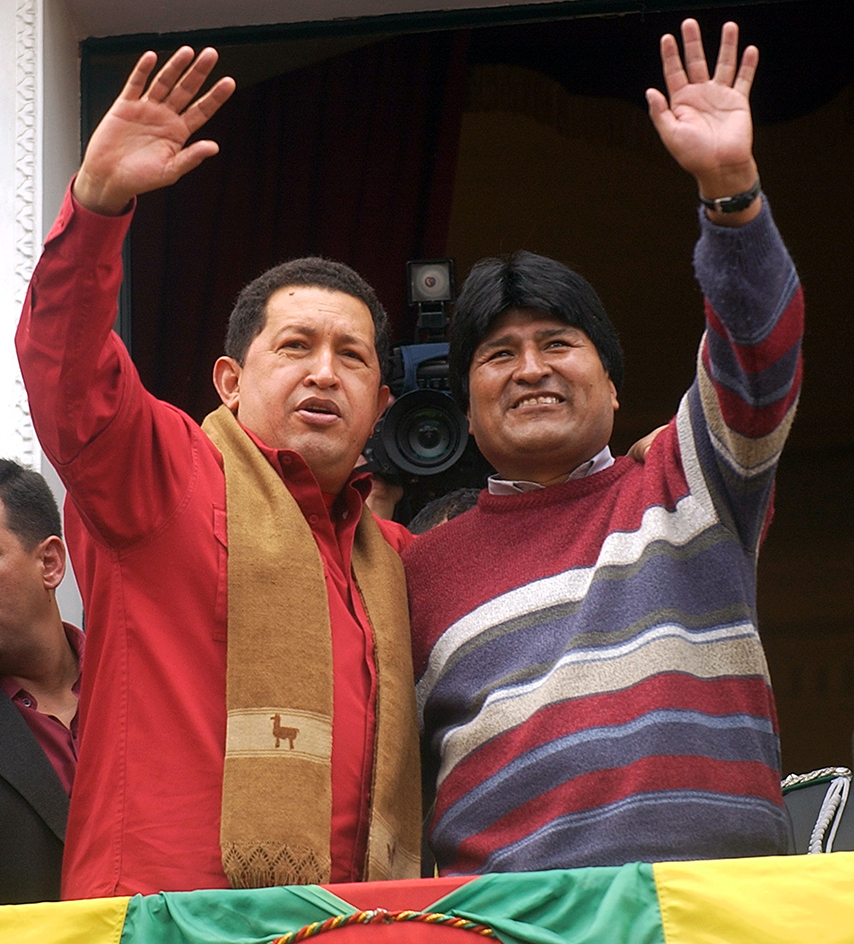
Chávez was reelected in a landslide in 2006. In 2007, the National Assembly gave him power to rule by decree for 18 months. Chávez promoted his plan to create a “21st-century Socialism,” putting important industries under public control. In 2010, Chávez’s opponents won enough seats in the National Assembly to influence legislation. However, outgoing lawmakers soon gave Chávez decree powers for another 18 months. Chávez was reelected in October 2012, but he died of cancer in March 2013.
In April 2013, former vice president Nicolás Maduro was elected president amid claims of electoral fraud. The National Assembly gave Maduro power to rule by decree for most of 2014 and 2015. Protests erupted in 2014 against the government’s handling of the economy and crime. Dozens of people were killed in the protests, and the government detained several opposition leaders.
The Democratic Unity Roundtable, an opposition coalition, won a majority in the National Assembly in December 2015. At the time, Venezuela was experiencing an economic crisis, partly because the price of oil had fallen. Venezuelans suffered from acute shortages of such basic goods as food and medicine. Maduro and the Supreme Tribunal repeatedly acted to limit the new legislature’s powers. In 2016, Maduro twice declared economic states of emergency that increased his authority. He accused foreign governments and his opponents in Venezuela of economic sabotage. Others blamed the poor economy on mismanagement and corruption. Economic sanctions (trade restrictions) imposed on Venezuela’s oil industry by the United States in 2017 deepened the economic crisis. The sanctions targeted the Maduro government’s undemocratic behavior.
Maduro was reelected in 2018, again amid claims of fraud. He continued to subdue political opposition, often violently. Security forces killed hundreds of protesters. In 2019, opposition legislators established a parallel “interim government” with Juan Guaidó, the National Assembly president, as its leader. But this parallel government failed to oust Maduro and was dissolved by early 2023. Extreme economic hardship and political circumstances fueled the emigration of millions of Venezuelans during the 2010’s and 2020’s.
In 2024, electoral authorities declared Maduro the winner of that year’s presidential election, despite evidence that the opposition candidate had won. The election was marked by irregularities and the suppression of Maduro’s political opponents. Protests broke out in Venezuela following the vote.
